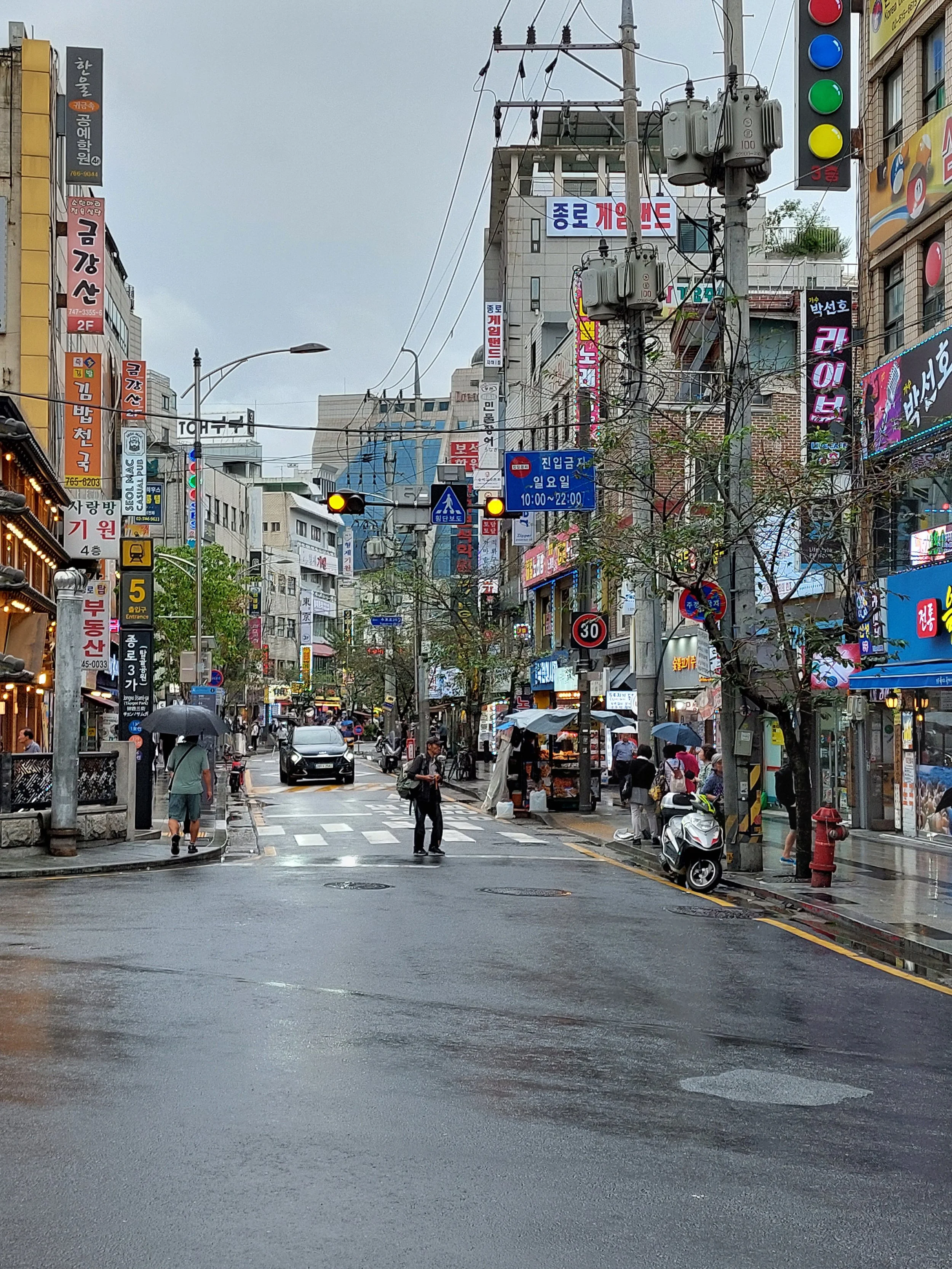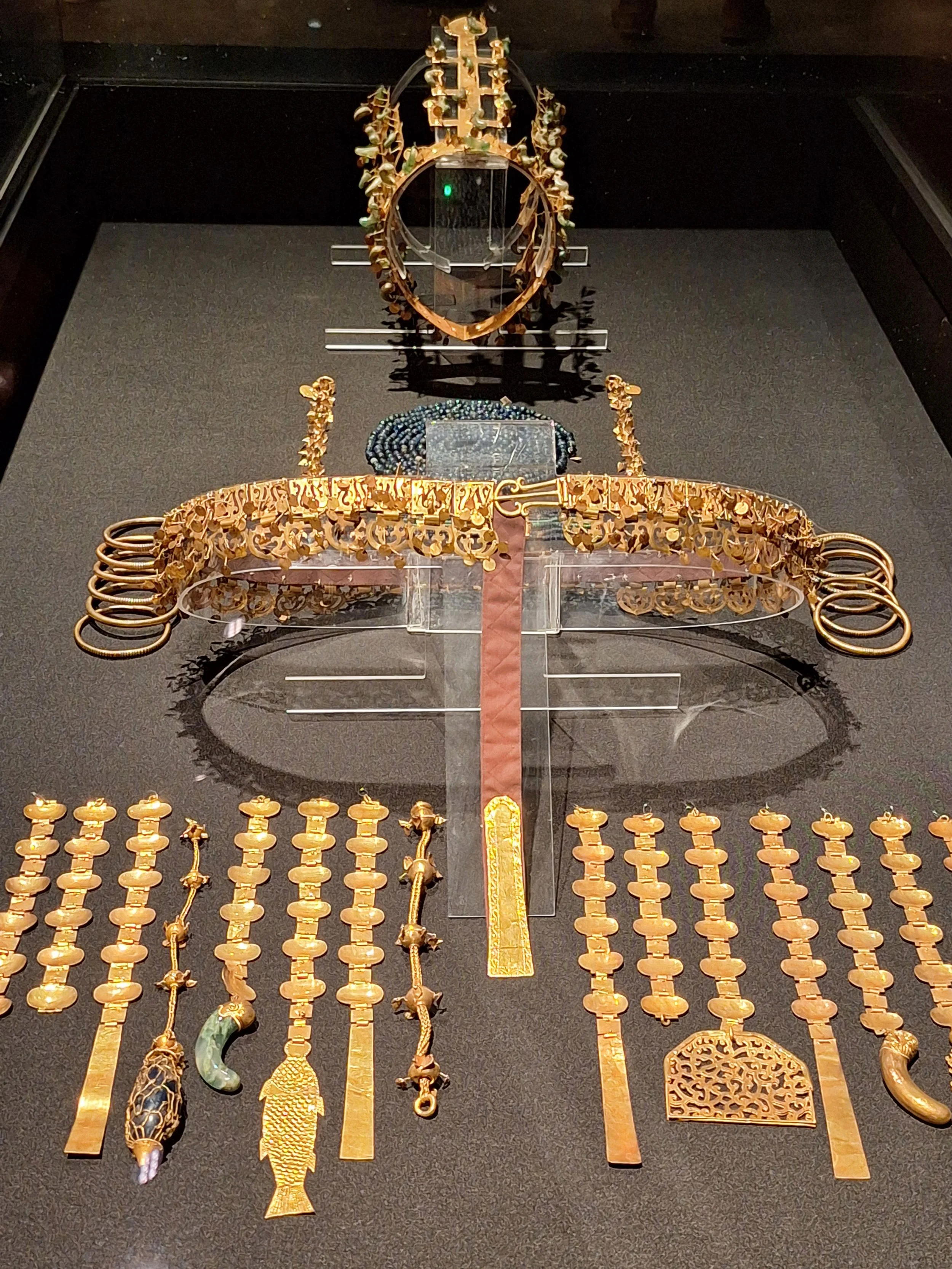South Korea - in photos
Limelight Arts Travel Director Nick Gordon has been traveling extensively in South Korea, with and without groups, these past years. In this photoessay, he shares some of what he has seen and what gives the country its unique character.
Seoul
Seoul is a buzzing modern metropolis - the city itself has a population of over 10 million people, and the metropolitan area is over 25 million, with an average population density of 16,000 per square kilometre. (For comparison Tokyo is 6,150 people per square kilometre and New York is 11,300.) While the city sprawls along the Han River and the surrounding valleys, its sheer size is rarely apparent because Korean urbanism is based on neighbourhoods that focus inwards, usually on a market district, and whose boundaries are usually arterial roads. Vast sections of these neighbourhoods are pedestrian areas and they are linked together by a highly efficient metro system. The result is a feeling of enclosure, of safety, and of convenience - each district has what one needs to live and each neighbourhood has a distinctive feel.
The city has been the capital of of Korea since 1394, when the ruling Joseon dynasty relocated there to better control trade and movement along the Han River. The capital was initially a large stone-walled fortress, traces of which survive in the north of the modern city, from which its old name derives - Hanseong (“Fortress on the Han”). More impressive than the remains of the old fortifications, though, are the UNESCO World Heritage-listed palaces of the Joseon dynasty, who ruled until Japanese Occupation in the early 1900s.
These palaces are sprawling complexes of residential buildings for the royal family, reception rooms, meeting halls and the like often connected by breezeways and gardens. Despite their size, the internal spaces of the buildings are quite intimate in scale and tend to be understated. The external decoration of the buildings, however, is a sight to behold: bright plays of acqua, deep blue, red, yellow and white, complex repeating geometric patterns and decorative motifs, layer. upon layer of carved wood often contrasting curves with linear elements. The style - dancheong - is rich with symbolism and has been used in Korean palaces and temples for at least 2,000 years. (If you want to learn more about this style and its symbolism, this article by Ronan O’Connell in the AFR is a good place to start.)
The palaces also contain unexpected greenspaces in the city and some were given over to the city and maintained as parks following the creation of the Republic of Korea. Indeed, the amount of greenspace in Seoul is surprising for such a densely populated city, and the surprise is amplified by the contrast between Korean garden design, which privileges a 'natural’ look, and the strong vertical and horizontal lines of high rise buildings. This aesthetic is broadly consistent with traditional Korean aesthetics. Korean museums will often help foreigners understand the national aesthetic by contrasting it with the ‘abstraction’ or ‘idealisation’ of traditional Japanese art and the ‘formalism’ or ‘stylisation’ of traditional Chinese art.
Contemporary Seoul
Despite the strong presence of the past in Jongson - the northern centre of the city - the hypermodernity of Seoul is equally present, and reflects South Korea’s dramatic economic rise over the past decades. One of the centrepieces of this New Seoul is the Dongdaemun Design Plaza, designed by Zaha Hadid. This monumental structure resembles some futuristic spaceship from some angles and a curled up dragon cloaked in scales that reflect the ambient light from others.
Part of what gives Seoul its vibrance is its thriving contemporary art scene, and the exhibitions of both contemporary artists and the preceding generations of artists who have been enormously influential abroad, such as Nam June Paik and Lee Ufan. In addition to public institutions such as the National Museum of Modern and Contemporary Art (which has multiple locations in Seoul) are private institutions, such as Gallery Hyundai, a powerhouse of Korea art which was founded in 1970 by Park Myong-Ja when she was 27 years old and which continues to develop the profiles of Korean artists at home and abroad.
Many of Seoul’s art galleries and museums owe their existence to the philanthropy of the country’s leading companies, such as the Songeun Museum, which was founded by Sungyeon Yoo - an aspiring artist who fled North Korea, became an entrepreneur in the energy sector, and later in life founded the Songeun Foundation to provide young artists with opportunities he didn’t have. Today it’s housed in a new museum in Gangnam designed by Herzog and de Meuron. Chief among the philanthropic museums, however, is the Leeuhm Samsung Museum of Art. This museum is across three buildings - designed by Mario Botta, Rem Koolhaus and Jean Nouvel - and in addition to exceptional exhibitions of cutting edge artists from around the globe, it contains a truly amazing collection of traditional Korean art.
Traditional Art
The Leeum has many spectacular pieces of celadon ceramics, probably the best known of of Korea’s traditional arts. The National Museum does too, but it has the space (and the duty) to show the breadth of Korea’s art and history. The museum is inspired by traditional palace architecture and is surrounded by gardens. Inside some of the highlights are two beautiful bronze buddhas of the type that were a formative influence on Japanese Buddhist art (they are designated national treasures), inlaid wood, painting and the extraordinary goldsmithing apparent in the crowns, jewellery and regalia of the Silla Dynasty, the kingdom that unified the peninsula in 668CE.
Gyeongju
The best place to discover the wonder of Korea’s early history, however, is the ancient Silla capital, Gyeongju. Although little remains of the ancient city and its palace complexes, the tumula tombs of the rulers are well preserved and were not really excavated until the 20th century. Part of why they have survived in tact is that the hills of earth and stone created over the inner chamber require serious manpower or mechanical excavation equipment to get inside - not really something to be done by a thief in the night! The funerary goods, as well as masterpieces of ancient Buddhist art found in the area, are preserved in the National Museum nearby - it is among the finest collections of Korean antiquities, and it is in a relatively small town 2 hours by high speed train from Seoul.
TEMPLES AND SHRINES
As South Korea is highly urbanised and its cities are dense, the mountainous, temple-studded countryside is never far away. And although as little as 15% of the country identify as Buddhist (almost 29% identify as Christian) and Korea is primarily secular (56% profess no religion), its temples are cultural monuments preserving significant moments in Korea’s past. UNESCO World Heritage-listed Haeinsa Temple for example was built to contain the 80,000 woodblocks of the Tripitaka Koreana - the most complete set of Buddhist texts - where as Bulguska Temple perched on a mountain overlooking the Eastern Sea is UNESCO-listed as one of the finest surviving examples of Silla Buddhist architecture. It contains six National Treasures, including two dazzling guilded bronze buddhas. The Seokguram Grotto above Bulguska contains a monumental stone Buddha from the 8th century, which is also masterpiece of eastern Buddhist art.
To foreigners, the number of people who visit temples even though they don’t identify as Buddhist may seem perplexing. At the Haedong Yonggungsa Temple, on the coast outside of Busan, one is greeted by the Pagoda of Traffic Safety, which was commissioned by Kumho, the tyre company (which also have an art museum in Seoul). People flock to this splendidly situated temple, however, to pray for academic success and/or children and the temple encourages people to do so regardless of their faith.
A similar paradox is at play at Jongmyo Shrine in Seoul - a veritable walled-off forest in the northern city. Here, the earthly remains of the Joseon dynasty are interred along with the stone tablets that enshrine the essence of their teaching/spirit. Although there is no significant royalist movement in South Korea, annual ancestor ceremonies continue to take place to this day and the signs in English remind you not to walk on the raised stone Ancestral Path reserved for the Confucian ceremonies.
Oh, and the food!
No time in Korea can be complete without exploring its cuisine, which is much more diverse than bulgogi, barbeque and kimchi. (Although there are well over 100 different types of kimchi, each with a different flavour profile, and not all involve cabbage.) The range of flavours and how they are combined is particularly broad, and as there are so many pickled things and side dishes to choose from, one can enjoy many different flavours in the one course. And while some dishes can be spicy, on the whole Korean cuisine is not terribly hot as the warm smokey flavour of chilli is usually preferred over its heat.
In addition to restaurants, there are markets where you’ll find smaller eateries that make one thing, making it easy to table hop from place to place (as the locals do in the evenings with a different soju, rice wine or beer shared at the table at each place). Regardless of the locale, freshness of ingredients is prized whether it is meat, seafood or vegetables.
















































































